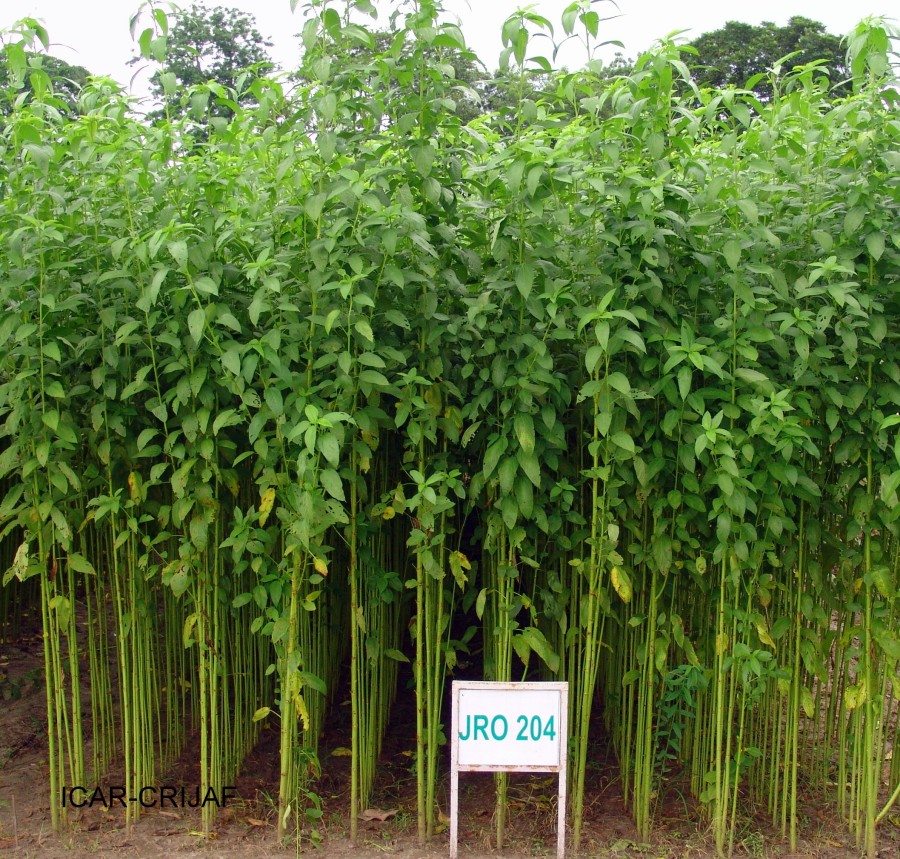
Jute leaf (popularly called ewedu among the Yoruba, ahingbara in Igbo and rama in Hausa) has been grown for food since 6000 B.C. It was said to be eaten by Cleopatra, because of its health and beauty benefits, and since then its good name has spread abroad. Over the centuries, Cochorus olitorius, which is the botanical name of the leafy vegetable have been scientifically proven to be efficient in the improvements of certain conditions in man.
In recent history, it has been relatively unknown for its range of culinary and health benefits. The fiber-rich stem of the jute plant has been dismissed as just a source for bags and ropes. The reason for this probably lies in the fact that this food with its tender leaves is so commonly grown in many parts of the world that it had no commercial value as a food product. But maybe the Egyptian people knew a secret. This member of the mallow family is considered a staple in Egypt, where it is called malukhiyah.

It is also grown in Bangladesh, India, Myanmar, Nepal, China, Taiwan, Thailand, Vietnam, Cambodia, Brazil and some other countries. In fact Bangladesh used to enjoy almost a monopoly of this fiber commercially; its share in the export market was 80% in 1947 – 48 but in 1975 – 76 it fell to only 25%. This fall in the world market was due to the fact that many countries had started growing jute and allied fibers.
Today, in many parts of Asia, Africa and in the Philippines, jute leaves, also called saluyot, or Jew mallow, have been heading the list of anti-aging miracles. Research has shown that the different varieties of Ewedu possess very important and valuable vitamins and antioxidant that will be of immeasurable nutritional and therapeutic value to the body system. The main vitamins in this vegetable are A, C and E, which are key to protecting the body from degenerative diseases such as Cancer.
Apart from being very rich sources in calcium, beta carotene, and vitamins C & E, jute leaves are a healthy addition to soups and stir-fry veggie dishes. Like the consistency of okra when cooked, jute leaves are similarly sticky and are added to soups, sauces, and stews to thicken the dish.
Ewedu leaves contain almost all of the nutrients needed by humans. But, the most important benefit of the leaves is their high antioxidant property, primarily in the form of Vitamin E. These antioxidants combine with free radicals that cause problems like arthritis, hardening of arteries, heart and kidney ailments.
Among the many benefits, saluyot contains:
- Vitamin A: aids in repairing the body’s cells and improves eyesight.
- Vitamin C or ascorbic acid: improves circulation and helps lower the risk of cataracts and other eye disorders.
- Vitamin E: slows down the aches and pains associated with aging, holds infertility at bay, and increases stamina.
- A high percentage of calcium, which contributes to strong teeth and bones.
SO WHAT DO YOU ACTUALLY THINK ABOUT THIS POST? WHY DON'T YOU SCROLL DOWN BELOW AND LEAVE A COMMENT FOR PEOPLE TO SEE...
Loading...
testin
Thank you very much for sharing interesting information that will make me able to have some amazing benefits using jute leaf.
ReplyDeleteAlbert
Dissertation writing services